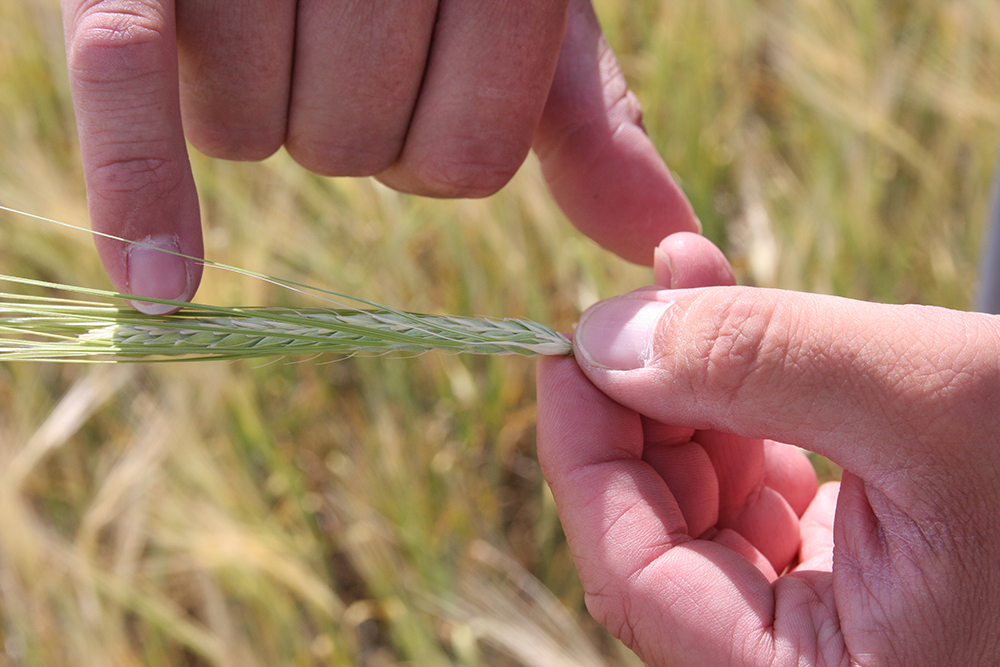The western Saskatchewan leg of FarmLink’s 2019 crop tour demonstrated how erratic and unpredictable this year has been for the province’s farmers.
This part of the tour saw fields ranging from hail-damaged and low-yielding to fields yielding well above average.
The randomness was illustrated at the first two stops of the tour about 30 kilometres south of where it started in Kindersley. One green pea field near Glidden was destroyed by hail and was projected to yield only in the low 20s. Less than two km away, another pea field was completely untouched by hail and projected to yield 10 bushels per acre more its neighbour.
Read Also

Manitoba extends Crown land rent freeze
Manitoba government links the continued rental rate freeze on grazing and forage leases to economic and environmental challenges facing the industry
“There (are) just so, so many variables,” says Scott Anderson, manager of agronomic services for Nutrien, referring to differences that can be found in fields in close proximity to one another. “You really can’t do a large-area projection. You have to do it field by field.”
After Glidden, the tour moved south and east through Madison, Eston and Elbow before ending up in Moose Jaw for the night. The two-day tour provided assessments of many crops including green peas, spring wheat, durum, silage barley, malting barley and canola.
More stories from the crop tour:
Tour finds above average crops in Saskatchewan, Manitoba
Estimates surprise Sask. farmers
Alberta crops as variable as the rain
Tweets from Grain World Crop Tour
Although Bob Abel, regional manager of FarmLink in Unity, described the yields from the first day of the tour as “definitely less than expected,” Anderson expected worse and had a more positive reaction to what he saw.
“I was pleasantly surprised with the crop down through here. I had heard how dry it was early on but overall crop growth has been pretty good,” says Anderson. “I think, really what we could see was it varied quite a bit with moisture conditions. There (were) different amounts of moisture early in the season, different amounts later and you can see that reflected in the crop.”
The second day of the tour started in two fields just outside of Moose Jaw before heading south for the next three stops in the Avonlea area.
A couple more stops were made east of Avonlea before eventually heading up Highway 6 to Regina.
The second day of the tour showed a night-and-day difference in wheat yields compared to the area that was covered the first day.
The first day had many fields that looked nice from the road but didn’t yield as much as the experts guessed, like one chest-high spring wheat field near Milden that is expected to yield only about 30 bushels per acre.
The second day, however, saw consistent yield projections of more than 60 bu. per acre in almost all of the spring wheat and durum fields assessed.
Moisture at seeding time was the main reason for the stark difference.
In most fields projected to have better yields, the crop wasn’t seeded until late May, allowing it to take advantage of the June rains. The crops that were seeded in late April and early May didn’t get rain in time and tended to struggle.
Barley seemed to have decent yield projections throughout the province, but both spring wheat and durum varied drastically.
Areas south of Kindersley and north of Central Butte might see lower-than-expected wheat yields, while fields south of Central Butte had observers project above-average yields.















